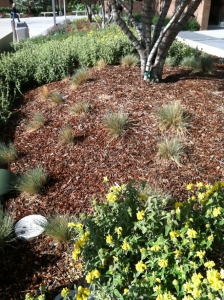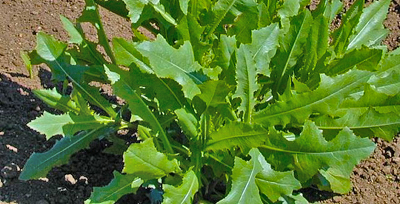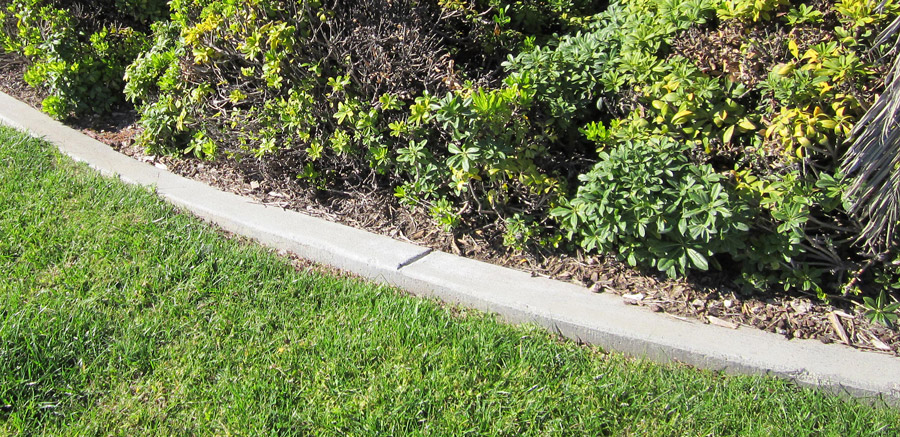Managing Weeds in and Around Landscaping
Preventing Weeds Prior to Planting Landscaping
When putting in new landscaping, or when renovating an existing site, following the steps outlined below may help prevent weed some problems:
- Site Assessment: Before planting the site and while it is in its “natural” state, it should be evaluated as to what condition the soil is in, the slope of the site, what weeds are currently present, and any other factor that can be corrected or future problems avoided. Such things as drainage, shading, soil compaction, water filtration rate, and soil fertility may affect weed growth and be considered as you create your management plan. For example, poor soil fertility can favor nitrogen fixing weeds such as clovers. Heavily compacted soil destroys the soil structure and can lead to poor drainage. Poor drainage allows water to pool which will deoxygenate the soil leaving “dead” spots that can be invaded by weeds.
- Site preparation: If possible, it is a good idea to attempt to control any weeds that exist on the site prior to beginning any other operation, such as grading or planting. Perennial weeds are of the utmost importance to control because if they are not eliminated at the beginning of the project, there is a strong likelihood they will be one of the first plants to establish themselves in the new landscape. Herbicides are sometimes used for this; however, soil solarization can be very effective if done sufficiently prior to the site development (minimum 6 weeks) and the optimum time of the year (best if done between June and August). Clear (not black) plastic should be used. Solarization is a good prevention and control method for weeds, plant diseases and other pests. Appendix L has more information on effective Solarization. With sufficient advance planning, the amount of viable weed seeds, or “seed bank”, in a given area can be exhausted by watering the area to promote seed germination, and then destroying the resulting weed seedlings by cultivating alone or with an herbicide followed by cultivation. Repeat this step two or more times for best results.
- Define the type of planting: Weed control options are more varied if landscaping consists entirely of woody plants as opposed to a mix of woody, herbaceous annuals and/or perennial plants. Borders and planter beds can be very effective to reduce weed encroachment and also help define planting types. Group plants with similar cultural needs together and keep grass from becoming a weedy invader in planters by using mowing strips or headers.
- Avoid planting weeds: If soil is imported from other sites, or when using potted transplants, weeds may be introduced to the site. Potted plants should be checked for weeds and, if present, they should be exchanged for weed-free planting material from the supplier or control the weeds in the pots before planting, most often by pulling them out during the planting process.
- Encourage rapid establishment of plantings: Newly planted areas should be monitored frequently and to ensure the plantings are establishing themselves as quickly as possible so that they can be competitive with the weeds that will surely try to establish themselves. This is a good time to hand pull small weeds as they appear and try to keep them from flowering and setting seed. A good pre-emergent herbicide could be an option as well.
Preventing Weeds in Existing Landscaping

Mulch used in this planter at the Hall of Administration helps prevent weed growth, conserves water and reduces runoff.
The fact that many of Los Angeles County’s invasive weeds are prolific seed producers means that there will be almost constant pressure for invasion or reinvasion into an area if the conditions are correct. Most seeds need a place to germinate (soil), exposure to sunlight, and water. Modifications to the landscape environment that serve to interfere with one or more of these critical needs will help prevent weeds from becoming established. In keeping with this principle, it is best to avoid watering large areas where there are no established plants as it only favors weed growth. Using drip irrigation and micro sprinkler heads instead of traditional overhead sprinkler or flood irrigation will go a long way to prevent weeds, is a more efficient use of water and reduces the chance of offsite runoff. Avoiding deep soil disturbances can prevent weed seeds from being moved to the top where they can more readily germinate, and to the extent practicable, weeds should be controlled before they can produce seeds.
The sight of well-managed turf in an area where it’s appropriate can be a very attractive landscape feature. However, many turf (grass) species can become invasive in planters, and the sight of weedy grass growing up through landscape plants can be particularly unappealing.
Mowing strips and headers should be used to help prevent grass invasion into areas where it is unwanted.
If topsoil or soil amendments are used, avoid reintroducing weed seeds by using products that have been sterilized or kiln dried.
Mulches are a very effective method for preventing weeds. They look good, and are also desirable because they conserve water as well as reduce water runoff. If caught early enough, occasional weed “break outs” in mulch are usually very easy to control by hand pulling or herbicide spot treatments. Mulches suppress weed growth by physically blocking sunlight required for weeds to establish themselves. In order for them to be effective, mulches have to be at least 3 to 4 inches thick. Many types are available to choose from; the following is a generalized listing of what is currently available.
- Organic Mulches: Organic mulches as the name implies are made of naturally occurring elements. These include wood chips, sawdust, leaf clippings and bark chips. The important thing to remember when using organic mulches is that it is the thickness or depth of the material that provides the weed suppression. Onsite composting of vegetation can be a good and renewable source of organic mulch. It is not recommended that food items such as leftovers and table scraps be included in compost/mulch as it will almost certainly result in unwanted rodents.
- Inorganic Mulches: These can include both artificial and naturally occurring materials. These include such things as sand, gravel or pebbles.
- Synthetic Mulches: These are all synthetic material that has been engineered to replace other more conventional products. These include fabrics or geotiles that are substitutes for the more traditional black plastic.
Weed Identification, Surveys and Action Thresholds
Becoming familiar with the weed species common to an area helps with decisions regarding which weeds can simply be tolerated and which ones will need some sort of management. Weed identification and surveys also allow the detection of early stages of weed growth at which time they are much easier to control with virtually any of the management methods, including herbicides. If mulch is used, the early appearance of weeds can be an indication the mulch needs to be thicker, or, in the case of organic mulch, is beginning to break down and needs to be refreshed.
The best way to see changes occurring over time is to monitor the grounds at regular intervals. A good way to put this into practice is to perform regular “walks” about the area and create a check list of problem weeds / areas within the landscape that can help refine an overall Weed Management Program. Often times, seasonal control trends can be identified which can be anticipated and perhaps even prevented. ACWM is also capable of identifying any weed occurring in Los Angeles County.
Each facility will have to develop its own action threshold for responding to weeds with the understanding that is almost always better to attempt to control weeds when they are in an early growth stage. Removing young weeds immediately with a scuffle hoe is a successful weed management strategy used at hundreds, if not thousands, of landscaped areas in Los Angeles County.
Management Practices
In reasonably well managed landscaping, there are a number of viable control options which, if used, can reduce the dependency on herbicides.
Hand Weeding and Cultivation
Hand pulling or using a hoe (cultivation) is the oldest form of weed control. The selective removal of weeds that are still in the early stages of growth before they have had the chance to set seed can be a very effective method to maintain landscapes in a weed free condition.
Mowing
Mowing does not usually kill or remove weeds as much as it manages them to the extent that an area can look presentable even though the weeds may still be there. Mowing before the weeds produce seeds will help diminish the seed bank. In non-irrigated areas, mowing can usually be discontinued after about mid-May until the rainy season generates new growth.
String Trimmers
String trimmers (also known as “weed-eaters”) are similar to mowing in that they don’t always kill weeds, but maintain them at such a low growth height that an area can look acceptable even though the weeds may still be there. Weeds cut closer towards the onset of summer my actually die and not return until the rainy season. String trimmers are useful for maintaining a separation between invasive turf grass and planter areas. Using them too close to existing landscape plants can severely damage the plants over time.
Flaming
Flaming involves using a propane burner to kill weeds. It can be a very effective technique for broadleaf weeds in cracks, crevices, along fences or in mulch. It is less effective on grasses. Flaming works best on young plants and they don’t have to be completely toasted as only briefly heating to the point of wilting will usually kill them in a few days. For obvious reasons, this technique should never be used next to dry weeds, brush or other flammable material.
Steam, Hot Water, Hot Foam
These are techniques that require a machine to produce steam or hot sugary foam to kill weeds. They will kill weeds on direct contact and are most effective against very young herbaceous weeds. The equipment can be very expensive to purchase or lease, and then maintain. Because of this and the hazard posed by tanks full of boiling liquids, steam/hot water/hot foam are probably not viable options for most weed management situations.
Herbicides
Herbicides can be a very effective tool for management of weeds in landscaped areas, especially spot treatments of weeds in mulch, cracks and crevices, along fence lines, etc. Many of the commonly available herbicides will harm plants on contact so their use to manage weeds mixed in with landscaping is limited. Some of the pre-emergent herbicides can injure plants if absorbed through the roots. Before any of these are used, an ACWM biologist should be consulted. Application timing is important because most weeds are easier to control when in an early growth stage at which point they also require less herbicide. Herbicides are pesticides so all of the requirements related to pesticide-use outlined in Section 14 and summarized in Appendix A must be followed including employee training, contractor licensing and proper storage. The use of herbicides to control vegetation beyond simple landscaped areas is a considerably more challenging task requiring experience and skill which is often best left to experts.



